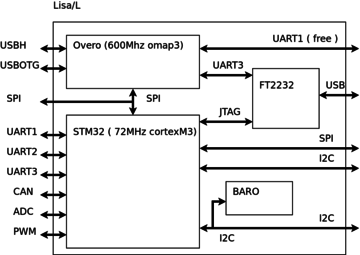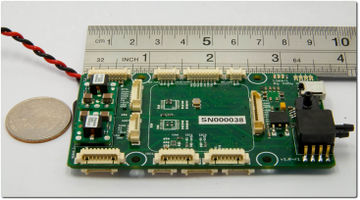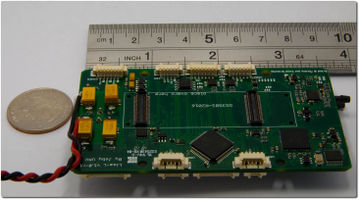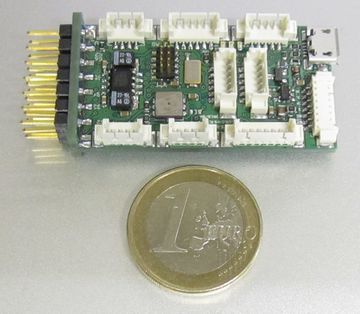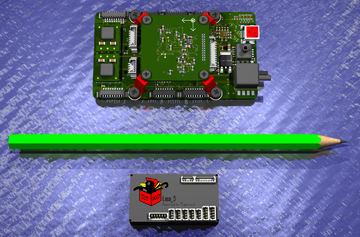Lisa
Lisa ( the Lost Illusions Serendipitous Autopilot) is a new range of autopilots based on STM32 microcontrollers ( CortexM3@72Mhz ) designed to run Paparazzi. There's no such thing as a perfect autopilot, only autopilots adapted to a particular purpose. This is the reason why Lisa comes in different flavors for different usages.
The first members of the family are:
- Lisa/L, a design where the STM32 is associated to a gumstix Overo.
- Lisa/M, a design focusing on cost and simplicity.
- Lisa/S, a design focusing on size and weight.
Lisa/L
Description
Lisa/L is a dual processor board autopilot designed to allow the possibility of using Linux for Paparazzi airborne code.
Documentation
The documentation for Lisa/L is broken into several parts due to board complexity and Gumstix Overo integration.
- Main Documentation - primary hardware documentation and intro to software
- Additional Developer Documentation - additional advanced hardware and software documentation and notes
- Lisa/L Gallery - nice pictures of Lisa/L
- Unfinished Rotorcraft Tutorial - rotorcraft tutorial, needs considerable work
- Unfinished Fixedwing Tutorial - fixedwing tutorial, needs considerable work
- Gumstix Integration Intro - intro and documentation listing for integrating a Gumstix Overo with Lisa/L, including for USB devices and cameras
Lisa/M
Description
Lisa/M is a great general purpose small-footprint autopilot. There are currently two versions that have been produced. Detailed documentation can be found here:
- Lisa/M v2.0 (current) Documentation NOT YET UP TO DATE
- Lisa/M v1.0 Documentation
Usage scenarios
There are many potential applications for the small, relatively inexpensive and flexible Lisa/M. For regular Autopilot boards a full Lisa/M board is needed. For some scenarios just a basic Lisa/M without IMU and barometric pressure sensor is needed, which reduces board cost. Here are some ideas (not all have yet been implemented):
- As a basic Autopilot
- To use the Lisa/M as an autopilot, we need to attach a GPS receiver. A nice uBlox LEA-5H or newer will perform great.
- As an advanced Autopilot
- Additional sensors for measuring airspeed, current, etc. would enhance a fixed-wing airframe.
- As a servo extender
- Sometimes being able to control seven actuators is just not enough. Large airframes may require flaps or an airbrake and automatic landing facilities. Maybe special ACL/Nav lights, or four cameras with zoom. By using a coupled second basic Lisa/M and connecting this to the master AP board we can extend the amount of servos. Large airframes can also benefit from remote and/or redundant servo drivers.
- As a Safety Pilot Device
- To provide an extra safety level required in some UAS challenges. A second Lisa board can make it easy to adhere to the rules for such a challenge.
- As a Data Logger
- Maybe you have a need only to log all kinds of data, like temperature, volts, amps, height, airspeed, and not control the aircraft. For this we can setup a Lisa/M board. Collecting this data can be to a storage medium like an micro SD card. Sometimes there is no need for realtime data collection through telemetry but just for storing a huge dataset.
- As a Camera controller
- On some models that do not require many servos (for example - flying wing with only 3 channels used), spare channels can be used for camera control. In addition, it could be used as an independent pan-tilt unit (PTU) controller.
- As a Airframe Tracker
- Tracking an airframe for an antenna or camera on a tripod is one of the many options to use a Lisa/M Board.
Lisa/S
Lisa/S is only a project at the moment. The focus for this design is size, weight and power consumption. The intent is to produce an autopilot suited for the smallest airframes. For now just a CAD rendering to wet your appetite compared to the Lisa/L, the S is the lower board.
